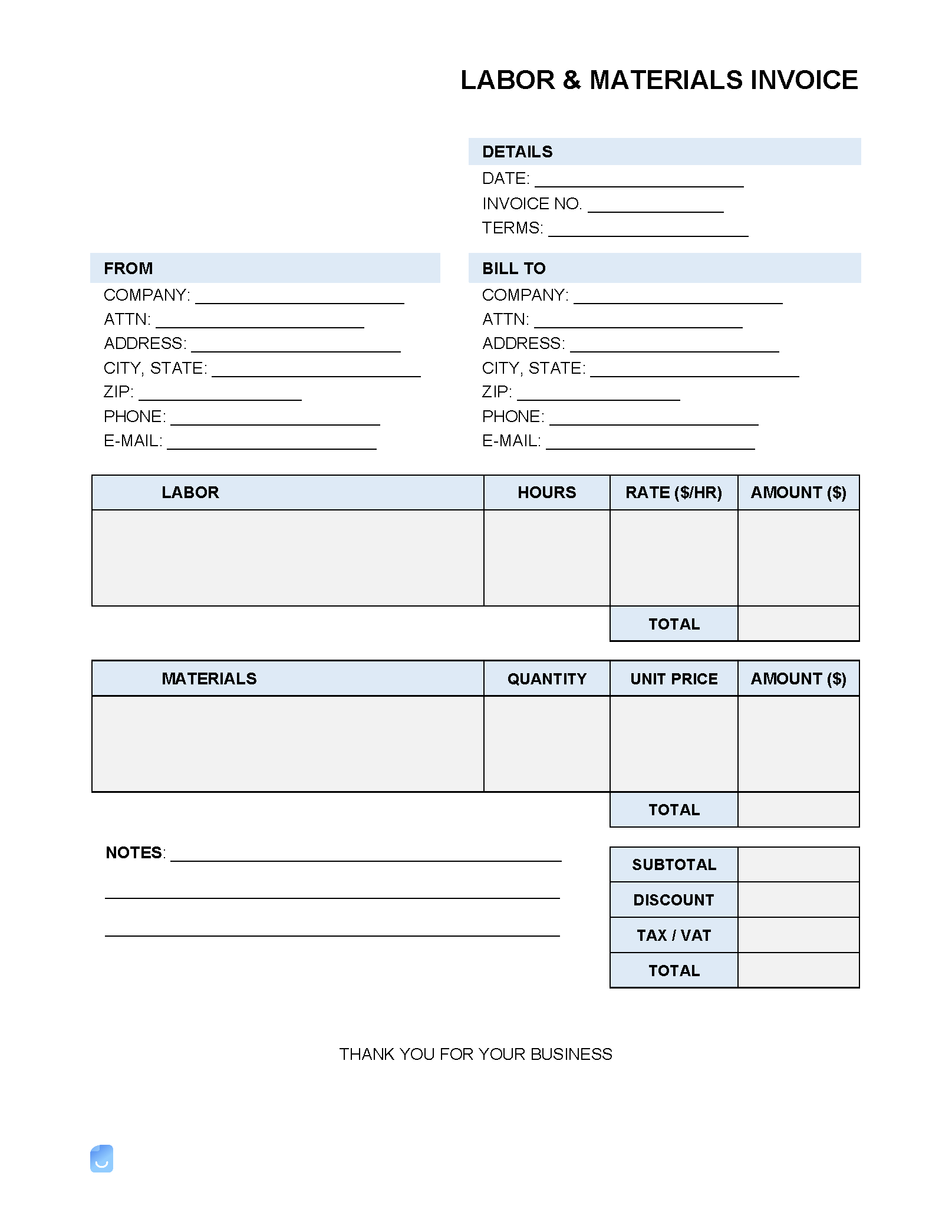Two Types
Materials ONLY Invoice – To send a receivable for goods and products only (quantity + cost per item). Service ONLY Invoice – To send a receivable for work provided (number of hours + rate).
When to Use the Invoice
Whether or not a company or freelancer should use a labor+material invoice is mainly dependent on whether or not the client is expecting the material cost to be included in the labor charge. For example, hairdressers don’t charge clients the cost of shampoo or conditioner – they only charge for the time dedicated to cutting hair. Another means of determining if the material should be separated from labor is if the client will ultimately use it at a later date, or it will continue to provide use/value for an extended length of time. For example, mechanics almost always (with the exception of routine service) charge parts separately to the labor dedicated to installing them. As an overview, materials, and labor should be separated individually if the following applies:
- The materials/products are expensive
- The product will be used for a considerable length of time
- The objects required to be purchased by the seller/provider are not routine (not factored into the labor cost)
What Professions Should use a Labor+Materials Invoice?
The following are examples of professions that often separate the labor and materials that went into the completion of a job:
- Contractors
- Construction companies
- Carpet installers
- Electricians
- Roofers
- Plumbers
- Mechanics
- HVAC Technicians
- Landscapers
- Handymen
- Event planners
- Caterers
